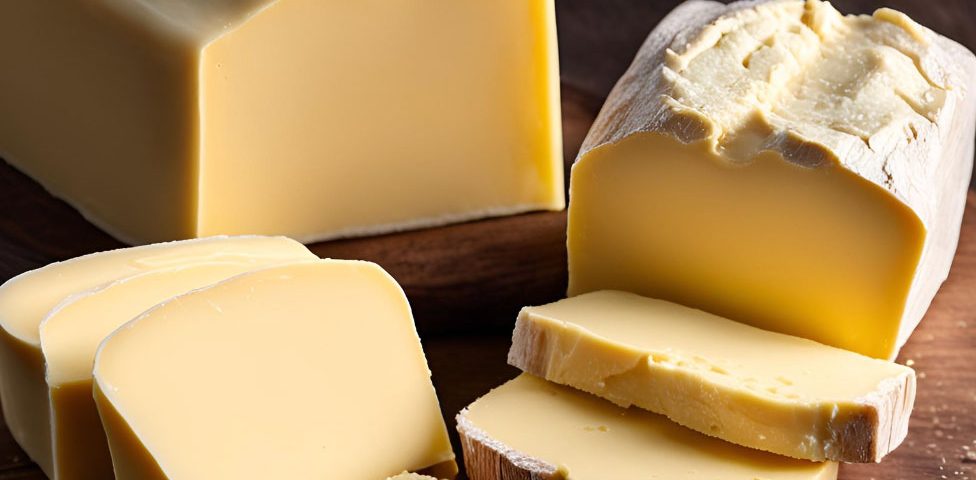
The versatility of milk powder: From cooking to beauty
April 20, 2024
Beyond the Loaf: A Deep Dive into the Culture, Craft, and Health of Sourdough Bread
November 4, 2024When it comes to choosing the right type of butter, understanding the differences between lactic and non-lactic butter can help you make a more informed decision. Both types have unique characteristics that affect their taste, texture, and suitability for various culinary applications. In this article, we’ll dive into what distinguishes lactic butter from non-lactic butter, their respective benefits, and which type might be the best choice for your needs.
1. Understanding Lactic Butter and Non-Lactic Butter
Lactic butter is made using a fermentation process that adds a distinct flavor and aroma. During production, cream is cultured with lactic acid bacteria, which ferments the cream and produces a tangy, richer butter. The fermentation period can vary, typically lasting between 12 to 24 hours, and allows the butter to develop complex, creamy flavors. This type of butter is popular in European cuisines, where it’s used for its pronounced flavor in baking, sauces, and spreads.
Non-lactic butter, on the other hand, is made by churning fresh cream without allowing fermentation. As a result, it has a milder, more neutral taste. It’s commonly found in American-style butters and is often preferred for recipes that require a less pronounced buttery flavor. Non-lactic butter can have a slight sweetness, and its simple profile makes it versatile for both sweet and savory recipes.
2. Flavor Profile
The most noticeable difference between lactic and non-lactic butter is the flavor. Lactic butter has a unique, slightly tangy taste due to the fermentation process. This makes it ideal for enhancing the flavors of baked goods, adding depth to sauces, or spreading on bread where its flavor can be appreciated. Many chefs and home cooks alike prefer lactic butter in recipes where butter’s taste is a key component, as it brings complexity and richness.
Non-lactic butter, however, has a more subdued flavor, which can make it more versatile in cooking and baking. This neutral profile allows other flavors to stand out in a dish rather than being dominated by the butter itself. Non-lactic butter is often preferred in recipes where a subtle buttery texture is needed without the additional tang.
3. Texture and Consistency
Both types of butter have different textures due to their production methods. Lactic butter typically has a softer, more spreadable consistency and a creamier mouthfeel. This is especially useful when making pastries or spreads, as the butter integrates smoothly with other ingredients, resulting in flakier, richer baked goods. The fermentation process in lactic butter can also give it a slightly denser consistency, which some bakers favor.
Non-lactic butter, being churned without fermentation, has a slightly firmer texture, making it better suited for certain applications, like cooking at high temperatures or use in laminated doughs, where a firmer butter can help maintain structural integrity. It also holds its shape better, making it a go-to for specific baking and pastry tasks.
4. Culinary Uses
The choice between lactic and non-lactic butter can greatly depend on what you’re cooking or baking. Here are some of the typical uses for each:
– Lactic Butter: Due to its tangy flavor, lactic butter is commonly used in European-style baked goods, such as croissants, Danish pastries, and artisan breads. It’s also favored in sauces, where the added flavor enhances the richness of the dish. Lactic butter’s smooth spreadability makes it ideal as a topping on bread or crackers, where its flavor can be appreciated.
– Non-Lactic Butter: With its mild taste, non-lactic butter is versatile and works well in a variety of applications, including frying, baking, and sautéing. It’s a staple in many American kitchens and is commonly used in cookies, cakes, and other sweet treats where a subtler butter flavor is desired. Its firmer texture is helpful in high-heat cooking, as it melts evenly and can add a golden, crispy finish to dishes without overpowering other flavors.
5. Health and Nutritional Differences
The nutritional profile of both lactic and non-lactic butter is generally similar, as they are both high in fat, particularly saturated fat. However, some studies suggest that lactic butter may contain a few additional health benefits due to the probiotics present from the fermentation process. While the probiotic content in lactic butter isn’t significant, the fermentation process does produce compounds like lactic acid that can aid in digestion and may contribute to a healthier gut microbiome.
Non-lactic butter, while lacking the slight probiotic benefits, offers the same energy-boosting fats and fat-soluble vitamins (like vitamin A) as lactic butter. Both types should be enjoyed in moderation, as butter is calorie-dense and high in saturated fats.
6. Shelf Life and Storage
The shelf life and storage requirements also differ between lactic and non-lactic butter. Lactic butter, due to its fermentation, has a slightly longer shelf life than non-lactic butter and may stay fresh longer if kept in a cool environment. However, both types of butter should ideally be refrigerated to maintain their quality.
Lactic butter’s tangy flavor may deepen over time, making it an excellent choice for those who enjoy the complex, aged taste it can develop. Non-lactic butter, on the other hand, can go rancid more quickly due to its fresh cream base, especially if left at room temperature for extended periods.
7. Cost and Availability
Lactic butter is often more expensive and less widely available than non-lactic butter due to the additional fermentation process. It’s commonly found in European and specialty markets, whereas non-lactic butter is a standard staple in most supermarkets across North America. However, many gourmet shops and online retailers offer lactic butter, and as it becomes more popular, it’s increasingly accessible to consumers looking to experiment with its unique qualities.
8. Which is Better?
The choice between lactic and non-lactic butter ultimately depends on your flavor preferences and culinary needs. Here’s a quick summary to help you decide:
– Choose lactic butter if: You enjoy a rich, tangy flavor and plan to use it in baking, spreads, or recipes where butter’s flavor will shine. It’s ideal for artisan baking and enhancing savory dishes.
– Choose non-lactic butter if: You prefer a mild, versatile butter for general cooking, baking, or high-heat applications. Its neutral taste and firmer texture make it suitable for a wider range of recipes, especially those where a less dominant flavor is desired.
Final Verdict
Both lactic and non-lactic butter bring unique flavors, textures, and uses to the table. Lactic butter is a fantastic option for adding complexity to dishes and works well in baked goods, sauces, and spreads. Non-lactic butter, with its mild taste, is more versatile and fits seamlessly into both sweet and savory dishes, making it a great all-purpose choice. By understanding their unique characteristics, you can select the best butter to enhance your culinary creations and satisfy your taste preferences.



